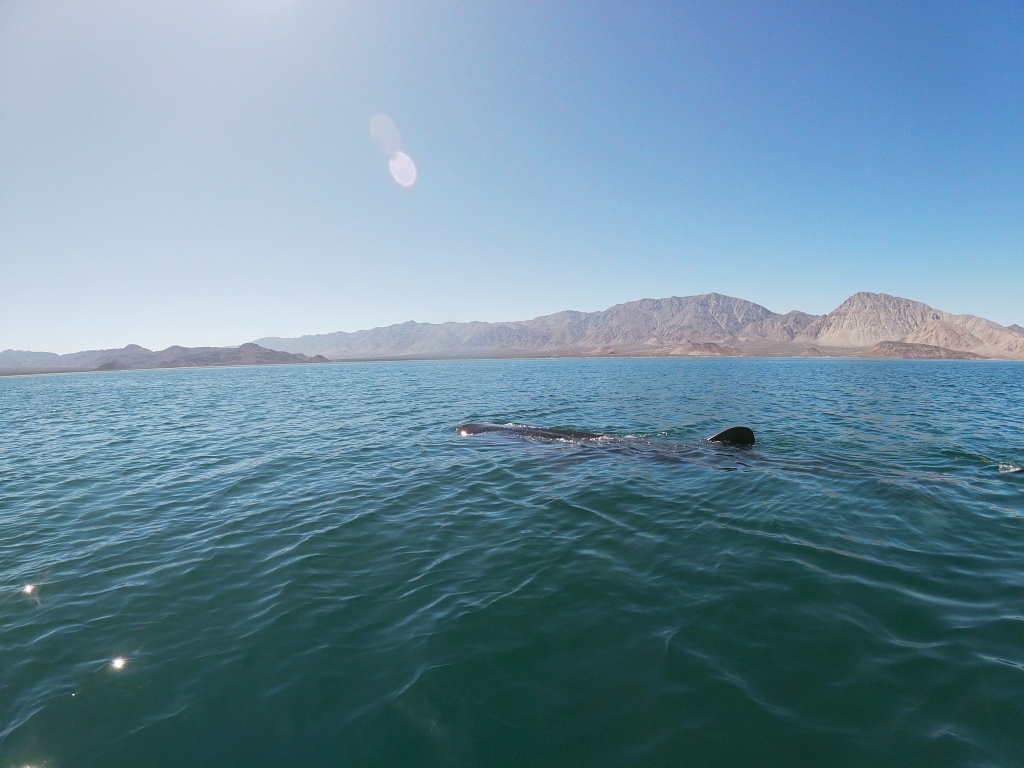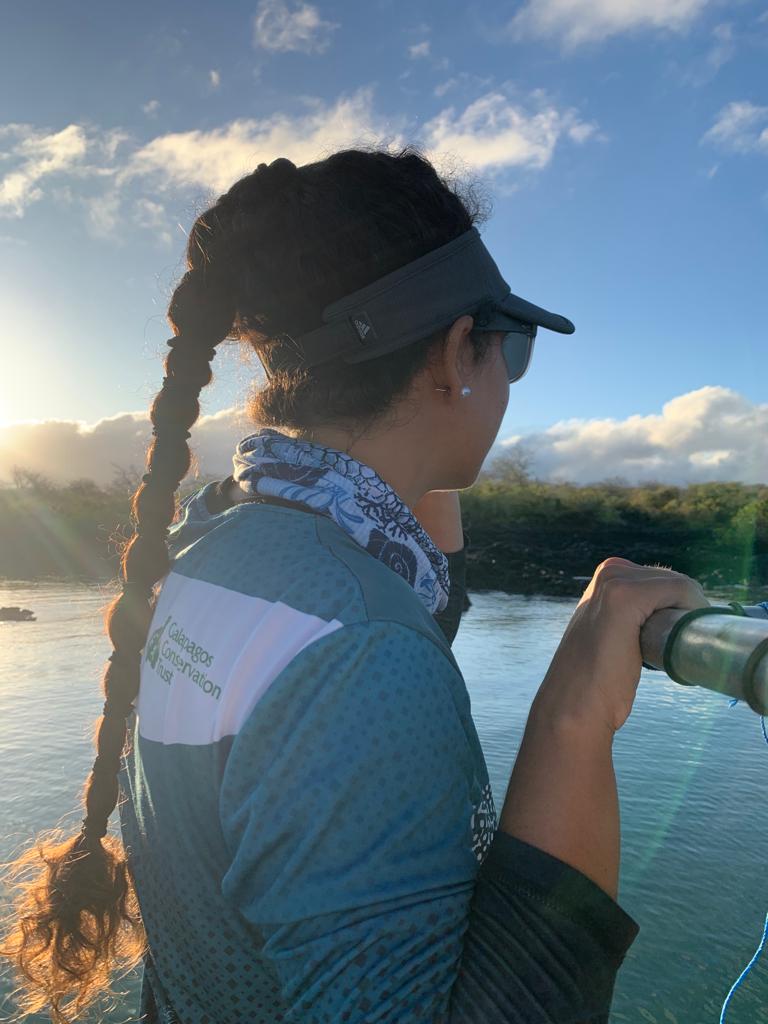Shortlisted for the 2023 Southwood Prize
Salomé Jaramillo Gil talks us through her research, conducted with colleagues, which aimed to predict whale shark abundance. Through results obtained via modelling and photo identification, it is suggested that local authorities apply the model each spring.
Ecotourism and conservation
Nowadays, ecotourism with wildlife has witnessed unprecedented growth, attracting tourists seeking immersive experiences with nature. However, when ecotourism guidelines are not well-established, human behaviour can induce stress in animals. When you spend time with these giant animals, you start to notice that some are shyer than others, and this behaviour can be related to previous experiences with boats or swimmers.
Therefore, can we predict how many whale sharks are going to show up every season? And if we know how many before the season starts, dynamic management regulations can be applied. By integrating predictive models with historical data and environmental factors, proactive measures can mitigate disturbances. This approach fosters sustainable coexistence between ecotourism and conservation, preserving ecosystems and promoting long-term viability.
Research impacts
Ecological modelling holds countless applications not only in marine environments but also in terrestrial ecosystems. With access to extensive datasets spanning continuous periods, it becomes feasible to observed patterns of behaviour and elucidate the relationships between animals and their environment.

This tool allows us to make informed predictions and provide more effective management recommendations to the authorities. By leveraging ecological models, we can gain valuable insights into ecosystem dynamics, facilitating proactive conservation strategies and sustainable resource management practices.
Challenges of data collection

Working with wildlife animals always presents a challenge, where encounters are unpredictable, and ecosystem dynamics are in constant flux. The primary challenges encountered during fieldwork predominantly revolve around the absence of animals and visibility issues.
The bay contains nutrient-rich waters exhibiting a greenish appearance most of the time, and suspended particles, such as copepods, are perpetually present, reducing visibility. These conditions represent a challenge when photo identification needs to be made, as the images captured often suffer from blurriness, complicating accurate identification.
Research surprises
This paper was the results of my master thesis, when I estimate the annual aggregation size, I never anticipated the number of animals present during the 2014-2015. While we were aware that these years witnessed an increased frequency of shark sightings via photo identification, the actual aggregation numbers caught me completely off guard. Furthermore, the revelation that Bahia de Los Angeles is the second-largest aggregation of whale sharks in Mexico was entirely unexpected.
Implications for policy and practice
This study holds significant implications for ecotourism management. We have proposed recommendations regarding the allocation of tourism licenses based on the anticipated presence of whale sharks in the bay during the tourist season. By estimating the expected number of sharks using pre-season sea surface temperature data (Feb-May), we can inform decisions on the appropriate number of licensed boats allowed in the area.
Moreover, the methodology developed in this study can be extrapolated to other species and locations for similar management purposes, enhancing the sustainability and efficacy of ecotourism practices worldwide.
About the author
Current research
I’m a PhD student in the University of North Carolina at Chapel Hill. I’m interested in understanding how large vertebrates move, why they choose certain areas to aggregate or how they migrate? And if some of these pattern movements are related with oceanographic variables or biological variables.
My dissertation research focuses to quantitatively analysing the movement dynamics of hammerhead sharks and eagle rays within the Galapagos archipelago. Through ecology model analyses, I aim to discern correlations between their movements and external factors such as temperature gradients and prey abundance. This approach will provide crucial insights into the mechanisms driving their spatial behaviours.
Furthermore, my research extends to elucidating the trophic ecology of eagle rays across various life stages and dietary compositions of two distinct populations of eagle rays—one inhabiting Florida (USA), and the other residing in the Galapagos Archipelago. By employing novel dietary analysis techniques (DNA), I seek to characterize the feeding preferences and dietary shifts of eagle rays, contributing to a deeper understanding of their ecological roles within marine ecosystems. Overall, my scientific inquiry aims to contribute to our understanding of the complex interactions between large vertebrates and their environment, providing valuable insights for conservation and management efforts.
Hurdles
During the early stages of my career, securing funding emerged as the predominant hurdle. Coming from a Latin American country where marine sciences are still burgeoning, opportunities for research grants were scant. Consequently, conducting fieldwork during my undergraduate studies presented considerable challenges, particularly due to the high costs associated with working with marine organisms.
Moreover, navigating scientific research in a second language added another layer of complexity, occasionally slowing down the productivity. Despite these obstacles, questions occasionally arise about my experiences as a Latin female operating within a predominantly male and white-dominated environment. However, personally, I’ve found that such distinctions hold little significance. I am fortunate to be part of a laboratory where gender and cultural diversity are celebrated, with a significant portion of its members being female and Latin.
Advice for other marine ecologists
Contrary to popular perception, the life of a marine ecologist extends far beyond fieldwork and idyllic encounters with marine life. They represent only a fraction of the time, most of it, lies analysing data, employing statistical models and computational tools to extract the information, besides, another significant portion of our time is devoted to reading and synthesizing existing literature. Therefore, if one’s passion for marine biology is not matched by data analysis and writing, this field may not align with their interests and aspirations.
Read the full article “Whale shark abundance forecast: The interannual hotspot effect” in Journal of Applied Ecology.
Find the other early career researchers and their articles that have been shortlisted for the 2023 Southwood Prize here!





